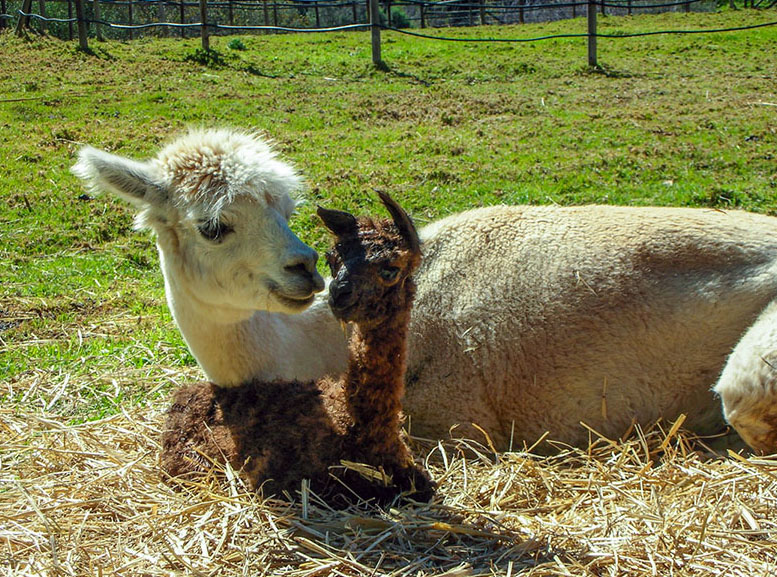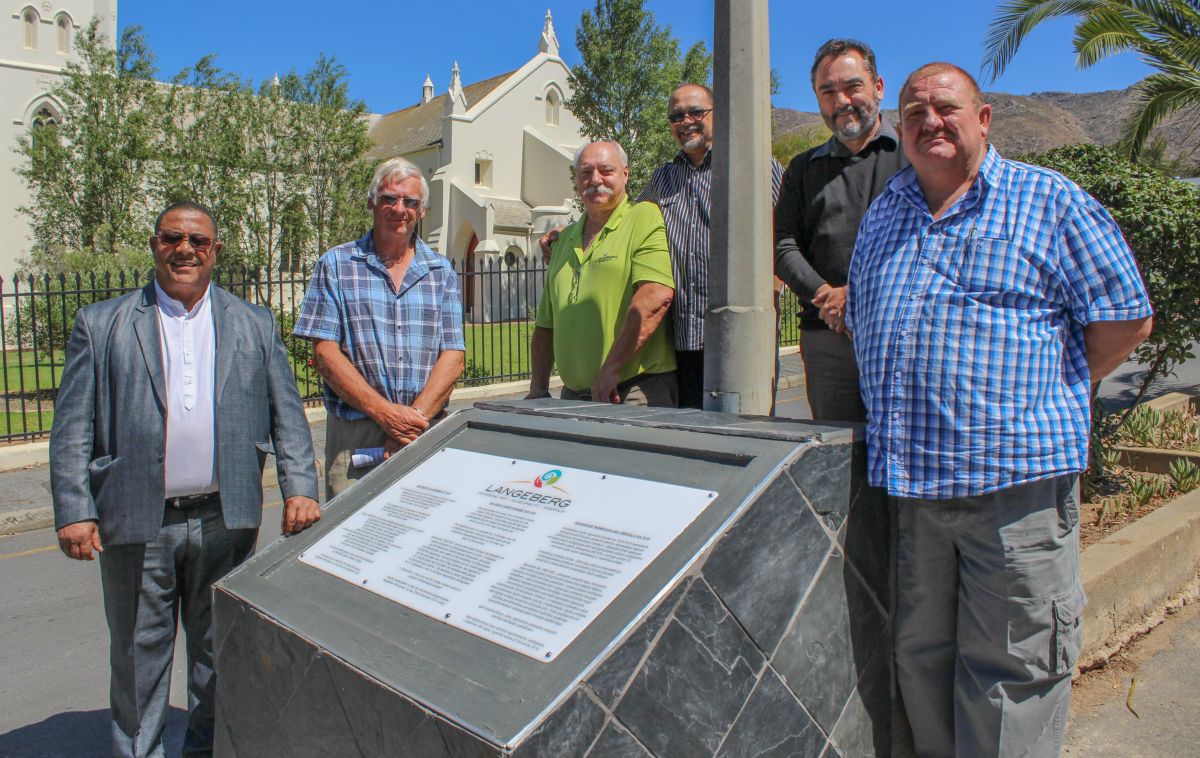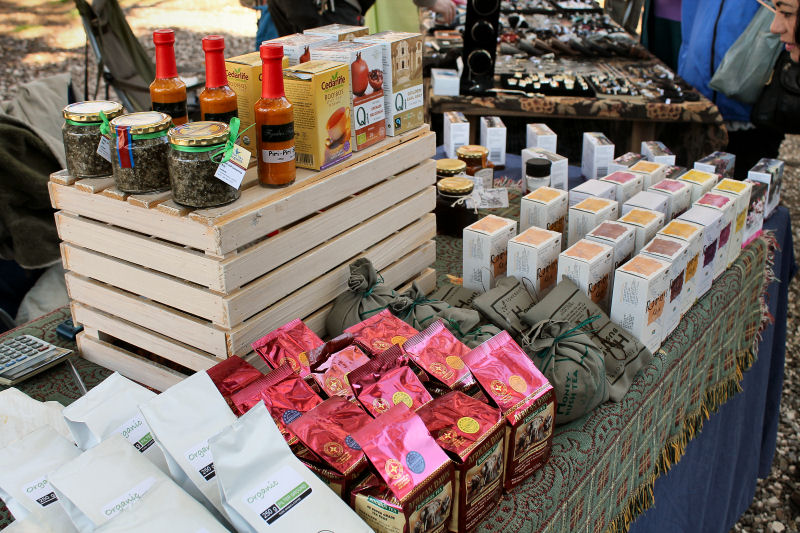– Montagu-Ashton Tourism is so proud and honoured to support Dancescape South Africa NPO
I am writing this with a BIG smile on my face – knowing that my heart is bursting with Pride – some of our amazing local youth – call them stars, against all odds, is currently dancing in Hamburg.
I’ll let Mitya explain how Dancescape youth danced their way to Hamburg, Germany:
“Dancescape South Africa has started the New Year and the new decade with a bang. We have been hard at work preparing to visit Germany in mid-February 2020. DSA has been invited to attend the 7th Biennale Tanzausbildung 2020 in Hamburg. We will be gathering with national and international schools of dance. It’s going to be a very special time of learning and exploring the art of dance. A huge event and one which we are all looking forward to. The Biennale is held every two years and is a week of intense dance training. The event will take place at the world famous Kampnagel – International center for Finer Arts. Each group will be given the opportunity to perform and we are proud to be representing South Africa at this event. Each student will also be able to view performances by professional dancers in the “Focus Tanz” running alongside the Biennale.
“Kampnagel is one of the most outstanding and biggest art centres in Europe. It is known as a major platform for innovative performance, theatre, contemporary dance and other related arts in the international as well as local context. Kampnagel has established itself as a place, which presents side by side well-known names of the international arts scene for example Peter Brook, Robert Wilson, Pina Bausch, Rebert Lepage, Arianne Mnouchkine and Rosas. It is also a place where young unknown artists have started their international careers.”- A quote from our invitation letter.
You may be wondering how we were given such a wonderful opportunity. News of our project was sent to prominent people by a local Montagu business man. This led to new contacts being forged with those interested in helping our communities and in particular our disadvantaged youth in the townships. Late last year we were invited to attend the Biennale and accepted the invitation without delay. Our group consists of five students and a teacher. Three of these students are now studying full time at the Cape Academy of Performing Arts in Cape Town. The other two youngsters are currently training with our project in Zolani, Ashton. I chose to commission Lihle Mfene, the most senior of all the dancers, to choreograph a piece to perform at the Biennale. I am delighted to say that his work has a strong African flavour and reflects South Africa well. It’s going to be an intense week and I am sure our young dancers will return full of new ideas and will be truly inspired. I hope to provide more feedback on the actual trip in later publications. Please view our project on the web for more information.
Mitya Sargeant (Director: Dancescape South Africa)
We’re now anxiously await their return to share in all the lovely news and highs of such an opportunity.
We’re committed to keep supporting Dancescape South Africa- and opportunities such as these make it all worth it.
View Full Post and Comments
TREND SHARE!!!!
Underground Supper Clubs
“It’s a community of people who are connected to each other and come together to eat good food in a home setting.” - Sunday Dinner Club
Welcome to the wonderful world of Underground Supper Clubs, mystical little food-fuelled gatherings that are popping up all over the world! These 'clubs' are for people interested in culinary experiences that are more community-minded, the event consisting of a 'pop up dinner' in a new location, with new people, trying new foods. These dinners are typically in a home setting with a mystery chef and mystery menu, though sometimes you will get the menu beforehand. The beauty about these clubs is you typically never know what to expect; you can have gourmet burgers and beers prepared by a celebrity chef in his home with a group of 30 strangers, or you can enjoy authentic exotic Philippine food flavors in a 'hidden restaurant' somewhere in your city. Some of the most popular clubs and restaurants within the United States include the Naked Lady Room in NYC, Hush in DC, and our personal favorite, the Sunday Dinner Club in Chicago.
It’s like a dinner party with strangers. Closed-door restaurants, also known as underground restaurants or supper clubs, are private eateries tucked away in a chef’s home. And though they’re not widely advertised, they are often some of the most sought-after tables in town.
For travellers, these clandestine spots offer a unique opportunity to step off the tourist track and dine like a local. Inside the home of professional chefs and enthusiastic cooks, diners can sample local flavours and unique dining styles at an easily digestible cost. The locations too, from hidden gardens to private living rooms, add to their unique charm.
The concept of closed-door restaurants is not new. With its roots in small family-run restaurants in Cuba, paladares, underground eateries peaked in popularity over the past few years. And though the buzz has subsided the trend is here to stay.
![]()
History of the Supper Club
The roots of this recent phenomenon were believed to have taken place during the early 20th century; in particular, during the prohibition era in America. Roadhouses became commonplace in an attempt to cater for travelling gangsters who were transporting Canadian-label contraband across the border (Bredahl, 2011). It wasn’t until after the end of prohibition that supper clubs gained a food hold. Many roadhouses became legalised and the supper club became a more refined affair. Bredahl (2011, p.4) describes the traditional supper club of the 1930’s/40’s, in Wisconsin, as an evening of ‘linen table serve, liquors, entertainment, and dancing – a destination for a night out’. Bredahl’s description of the clubs makes it clear that the focus of the evening was not purely about the culinary delights on offer but that the entertainment and social aspect the clubs provided was of equal importance. Not only were underground dining establishments popular in America at the time but it is also known that they also were in existence, to a lesser extent, in London. According to The University of East Anglia (2010) ‘The Half Hundred Club’ was founded during the 1930’s by a group of likeminded individuals with the purpose of combining good food with good company. As Hayward (2010) explains, members of the club were keen to break rules and would occasionally experiment, having their meals in strange places such as London Zoo, a Chinese restaurant and at the cinema. It was usually the case that members would take turns at hosting dinners, under a strict budget, to which each member was expected to pay 10 shillings towards. Similarly, many other clubs existed in other countries during the later period of the 20th century. Known as Si Fang Cai in Hong Kong, these Supper Clubs were a very traditional type of home restaurant whereby secret recipes were handed down through generations and served up to private parties on an adhoc basis (China – Cultural.com, 2010). In Cuba, however, the Clubs were much more commonplace. Paladars, according to Mishan (2008) became a popular alternative to state-run eateries. Private restaurants, although illegal, operated successfully. However, due to the multitude of illegal restaurants operating on the island, the Government decided to legalise the restaurants in 1993. The hidden restaurant industry is also deeply rooted in Latin America history, explains Romme (2007). Puertas Ceradas operate throughout Argentina, the oldest of which, Mis Raices, which operates in Buenos Aires. Juanita Posternak has been serving up in her large dining room that seats up to 40 people for the last 23 years. Likewise, the scene has remained strong in Paris. Jim Haynes’s Parisian apartment has accommodated over 100,000 diners over the past 30 years+ (March 2011)
Since we’re Back in the 20’s – now might be the time to strongly re-live the Supper club!!!
View Full Post and Comments

A two hour drive from Cape Town, Montagu is the most developed sport climbing area in the Western Cape (if not the country). 100's of sport routes of all ranges of difficulty. +/-400 Single Pitch & a good few Multi-Pitch Sport Routes.
Continue Reading

Somthing really majestic when uncovering the hikers and rock climbing paradise of the Langeberg.
Continue Reading
The cat who came to church.
You can call this a feel good story, a story of chance perhaps, animal lovers will call it a blessing, but the truth is, it’s a story of a cat who came to church.
On the 5th of February, the Museum Herb department set off early to forage for herbs, specifically Buchu, in a valley, right next to the farm Octavia. After a few hours of scouring the valley, climbing mountains, silently praying that a certain elongated, legless reptile, don’t host a welcome party on the overgrown pathways for us, we called it a morning, as dense underbrush and treacherous cliffs made the search nearly impossible.
Almost lunch time and off we went to the Meulplaas picnic spot to break bread, recharge and discuss the grave problem of where to search for Buchu next.
The first thing noticeable on opening our lunch boxes was a plastic container with water, and a few dog biscuits lying on the ground. As if on cue, a small face peeked from a bush nearby and started meowing, as if to say, I’m joining you. Gobbling down Philllip’s bacon bits that he took from his bread, and sampling the Spar pizza, the little minx must have felt that it’s a meal fit for a king.
As we made ready for departure, the haggard face, and yet strange welcoming energy of the scrawny kitten, was enough to make a grown girl weep. Isn’t there a saying “everything happens for a reason”, or “there’s no such thing as coincidence”, as the museum had a few rodent problems just a few weeks back?.
So off we went, full tummies, a few bags of herbs, absolutely no plan for finding the herb that we are actually searching for, and a cat who came to church with us.
He was dubbed Buchu by Mrs Jeanne Biesenbach that day. So in a way, we did find Buchu. Or rather, Buchu found us.
There is something sacred about having a cat at the Museum. It might have a lot to do with the fact that they believe they should be worshipped. We can only thank the Ancient Egyptians for that.
These days there’s a point of interest for kids as well at the museum, as this cat loves interacting, adores attention, and believes it’s his cat given right to stroll into the manager’s office where he knows he’ll get a snack. It’s only a very important meeting after all.
We invite all cat lovers to pop by the museum and see the amazing transformation Buchu has went through. I’m pretty sure your curiosity won’t kill him.
-Anneline Mohammedt.
View Full Post and Comments
27 April was SA National Alpaca Day – dedicated to those furry faces- gorgeous animals that we’re not always lucky enough to meet.
Alpacas produced the golden fleece of the Incas. Once upon a time it was said that alpaca fiber was weighed up in gold, and clothes made from it were only worn by royalty. Nowadays, it is most famous for its cuddly looks and loved by young and old alike. However, there is a great future for alpacas in agriculture as commercial fiber producers, too.
Lucky for Montagu visitors and locals alike you can meet and interact with these friendly alpacas (and a donkey or two) at the new Alpaca Paddocks @ Healing Farm Haven.
Janet Bourhill, the “Alpaca Mama” invites everyone to come and visit and interacts with her friendly alpacas and find out all about them and their amazing fibre/wool. “We process our own alpaca wool and sell products made from their wool” explains Janet.
Contact: Janet Bourhill -TEL: 023 111 0005 -CELL: 083 682 3828, Janetdbourhill@gmail.com

View Full Post and Comments
Deur : Francois de Kock
Sommige van ons onthou nog, of is bewus van, die gevreesde en dodelike siekte "Die Groot Griep van 1918" wat tot duisende streftes landwyd gelei het. Ook Montagu het nie die siekte en sy vernietigende gevolge vrygespring nie.
In baie dorpe was dit die gebruik dat diegene wat aan die siekte gesterf het, uit respek op kerkterreine ter ruste gelê was. Hier terplaatse was die grafte in die suid-oostelike hoek van die kerk gronde, maw die hoek naaste aan die huidige poskantoor.
Gedurende 1961/ 62 het die toenmalige munisipaliteit besluit om Bloemstraat van 'n baie smal systraat tot die huidige bree tweerigtinstraat met middelmannetjie of eiland, te vergroot. 'n Smal strook van die kerkgrond is vir die verbreding van die straat bekom.
Tydens die uitgrawing en grondverskuiwing het Dokter Charlie Muller van in 'Airlies' die huidige gastehuis skuins regoor gewoon het, die werksaamhede gestop het. Met verwysing na die Groot Griep het hy die aandag gevestig op die dodelike siektekieme wat daar begrawe gelê het. Hy het die gebied beveilig deur dit met 'n wit, kalkagtige poeier te bestrooi.
Die beendere is toe verder opgegrawe en in 'n "grafkelder" in die ou kerkhof begrawe. Die middelmannetjie is as 'n gedenktuin aangelê ter herrinering aan diegene wat aan die griep gesterf het, maar ook ter nagedagtenis aan die herbegrawing van die gestorwenes.
Daar was egter geen grafsteen of gedenkplaat by die gedenktuin of enige geskrifte beskikbaar wat na hierdie stukkie geskiedenis verwys nie. Die skrywer van hierdie artikel, Francois de Kock, het onlangs met die munisipaliteit onderhandel om 'n Gedenkplaat by die gedenktuin asook 'Grafkelder' aan te bring aangesien dit vamjaar die 100ste herdenking van die tragiese gebeure is.
Hierdie inligting is in gesprek aan Francois verstrek deur wyle Mnr Cloete, destyds 'n werknemer van die ou Afdelingsraad op Montagu. Francois beywer homs steeds om meer inligting oor raadsbesluite uit die argief in Kaapstad te bekom.
Hoe het Montagu die Groot Griep hanteer? :
- Die ou Sendingkerk (nou Museum) was as Hospitaal ingerig
- Die Ebenhaesersaal (ou NG Kerksaal) is as sopkombuis ingerig
- Begrafnisdienste is in baie gevalle in die opelug gehou by Lovers Walk uit vrees vir die aansteeklikheidsgevaar binne geboue.
Om die omvang en verwoesting van menselewens deur hierdie siekte in perspektief te bring, hiermee uittreksels uit verskeie artikels wat sedert Januarie 2018 in die media verskyn het:
(a) Netwerk24 - Januarie 2018: "Groot Griep van 1918 soos die einde van die mensdom"
(b) BEELD: 27 Januarie 2018: " Griep saai wêreldwyd spoor van dood en vrees - binne weke het 350,000 Suid Afrikaners gesterf"
(c) "Die grootste plaag in die geskiedenis"
(d) Die Pandemie het in Maart 1918 uitgebreek. Dit het die hele wêreld getref en in Wes Samoa is binne 2 maande 20% van sy bevolking uitgewis.
In die VSA het die lewensverwagting in 1918 met meer as 10 jaar gedaal.
'n Onverklaarde is waarom die griep nie hoofsaaklik die ou mens getref het nie. Die meeste streftes was tussen die ouderdom 20 - 40 gewees.
Aanvanklik was die sterftesyfer op ongeveer 21 miljoen beraam, vandag beraam pandemisie dat dit 100 miljoen kon wees.
BRON: Die Wagtoring

View Full Post and Comments
The true purpose of Arts education
I am so extremely proud when I look at what can be done in our communities- walking the road with Dancescape South Africa for a while already, witnessing the passion and dedication going into the arts education of children from disadvantaged communities. I salute Mitya and his team for keeping the legacy of Fiona Sargeant alive.
The following quote is very relevant in explaining why Dancescape South Africa do what they do:
“The true purpose of arts education is not necessarily to create more professional dancers or artists. It is to create more complete human beings who are critical thinkers, who have curious minds, who can lead productive lives.” – Kelly Pollock
I would like to drive this point home because I personally seen the growth of these children under the hands of Dancescape training, care and teachings.
It is just fitting to end this amazing year off- with a festive Celebration!!!
I want to invite everyone with a passion for Dance, Children and the amazing spirit of Community to attend the Year-end show on 8 December.
Mitya tells us more:
Dancescape Celebrate
It’s been a fantastic year for Dancescape South Africa (DSA).
This year we were able to support Lihle Mfene to pursue further training at the Cape Academy of Performing Arts and he will be joined by Lutho Zwedala next year.
We employ two Resident Teachers and have recently added a Public Relations Officer who continues to do great work for us in the townships. We would be unable to do all of this without the kind donations of individuals from all around the world.
Our dancers won numerous awards at the Montagu Youth Arts Festival including the Best Dance Entry of the Festival 2018 this year.
We recently received the Winelands Mayoral Tourism Award for Best Special Project.
To top the year up we will be showcasing our dancers at a performance :
“A Festive Celebration”
* 8th of December at the KWV Building in Montagu
* 4pm on that Saturday afternoon - performance starts at 6pm
* Tickets are only R50 for Adults and R10 for children.
Pack a picnic of your favorite eats and drinks and to join us !.
Throw a blanket down and relax .
Not only will you enjoy a fabulous evening of great dance but you will also be supporting us to continue our work for the benefit of the youth in the townships.
Many of you have supported us and in particular Fiona Sargeant throughout the years. Fiona sadly passed away in 2017 and her wish was for the work that she started to continue.
Only with your support will this be possible. For booking and more information please phone:
Mitya at +27 78 295 7879 or Patricia at +27 61 920 6940
or check out our website at http://dancescapesouthafrica.org.za/
View Full Post and Comments

Our Village Market is held every Saturday morning until 12h30 in the lovely Euvrard Park, Bath Street, opposite the Tourism Bureau. A real winner with locals and visitors alike, this is the place to experience a slice of Montagu life.
Continue Reading
.jpeg)
This year's Local is Lekker Indaba held in the quart yard of the MMACC (KWV Centre) turned out to be a huge success!
42 Stallholders (considerably more than last year) joined in the day to introduced their products to the community. It was well attended and supported and will definitely become a regular event on our annual calendar!
Continue Reading











.jpeg)